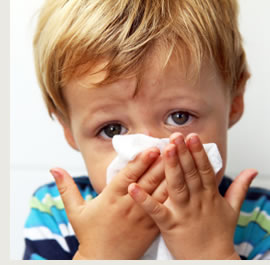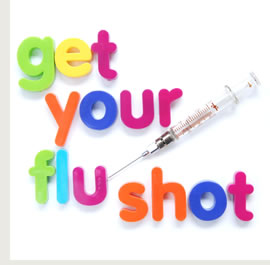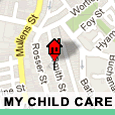|
Welcome,
Do you know your child care's protocol on sick kids? When are they OK to send in and when not? This week's articles include what to do when your child is sick and also an update on flu season, this year's flu vaccine and tips on how to avoid the lurgy.
We'd love to know what you think of this newsletter so please take this quick poll. The feedback you provide will help us deliver the best news in the best format for you.
|
|
 According to the Children's Youth and Women's Health Service, children get around 6-10 colds per year, with the highest number usually being during the first two years in child care, kindergarten or school. According to the Children's Youth and Women's Health Service, children get around 6-10 colds per year, with the highest number usually being during the first two years in child care, kindergarten or school.
It can seem like children have one cold after another and studies have shown that children in child care will most likely develop more colds than those who are at home. Small children are more affected by these sorts of viruses, because they rely on breathing through their nose much more than adults. So it's no surprise each cold at its peak will be fairly miserable for all concerned.
Colds often start with a high temperature (though it shouldn't really be that high or last more than a couple of days), drowsiness, difficulty in breathing, irritability…At this point it's definitely the best thing to keep the little one at home, because he or she would simply be miserable in child care and colds are more infectious in the first few days.
continued…
|
|
 It's wintertime, which means lots of colds and flu. Particularly if you've got kids in school and child care. By the time June kicks in, colds and flu are nicely settled into most child care centres, with the annual round of spluttering, wheezing, coughing, crying etc, and that's just the parents. It's wintertime, which means lots of colds and flu. Particularly if you've got kids in school and child care. By the time June kicks in, colds and flu are nicely settled into most child care centres, with the annual round of spluttering, wheezing, coughing, crying etc, and that's just the parents.
Common questions around the flu are: What is flu? Is it preventable or treatable? What's the difference between a cold and flu? How dangerous is the flu? Should you get the flu jab for your kids?
Influenza, commonly known as the flu, is caused by a virus and mainly spreads from person to person through the air by coughing, sneezing or talking, and by touching a person's hands, surface or object.
The flu virus infects the respiratory system such as the nose, throat and sometimes your lungs. It differs from a cold as symptoms such as fever, sore throat and muscle aches develop suddenly and last about a week.
continued…
|


 According to the Children's Youth and Women's Health Service, children get around 6-10 colds per year, with the highest number usually being during the first two years in child care, kindergarten or school.
According to the Children's Youth and Women's Health Service, children get around 6-10 colds per year, with the highest number usually being during the first two years in child care, kindergarten or school.



 It's wintertime, which means lots of colds and flu. Particularly if you've got kids in school and child care. By the time June kicks in, colds and flu are nicely settled into most child care centres, with the annual round of spluttering, wheezing, coughing, crying etc, and that's just the parents.
It's wintertime, which means lots of colds and flu. Particularly if you've got kids in school and child care. By the time June kicks in, colds and flu are nicely settled into most child care centres, with the annual round of spluttering, wheezing, coughing, crying etc, and that's just the parents.


